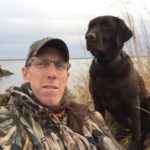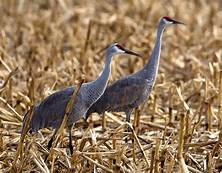 By Todd Schaller, WWA Vice President
By Todd Schaller, WWA Vice President
This article originally appeared in Wisconsin Waterfowl Association’s May, 2021 Newsletter edition.
Is a sustainable and ethical Sandhill Crane (SHC) hunting season coming to Wisconsin? A very popular question for the majority of WWA’s membership, Wisconsin waterfowl hunters and an initiative WWA’s Policy Committee has been, and continues to, explore.
While SHC hunting isn’t new, as it occurs in eighteen states and four Canadian provinces, it is a relatively new concept for the Mississippi Flyway States, which Wisconsin is part of, as it relates to the management of waterfowl and migratory birds.
 As with discussing any new ideas, the flurry of information and misinformation can be like a flock of teal zipping over your decoys, you’re not sure which bird to swing on. To avoid flock shooting and swinging on a bird so your dog gets a retrieve, WWA’s Education Committee is running an informational series on establishing a sustainable and ethical Sandhill Crane season in Wisconsin.
As with discussing any new ideas, the flurry of information and misinformation can be like a flock of teal zipping over your decoys, you’re not sure which bird to swing on. To avoid flock shooting and swinging on a bird so your dog gets a retrieve, WWA’s Education Committee is running an informational series on establishing a sustainable and ethical Sandhill Crane season in Wisconsin.
Items covered in the next several WWA Newsletters will include:
- Where is the proposal at currently (this article)
- Basic biology of Eastern Sandhill Crane
- Unique aspect (challenges and opportunities) of a Wisconsin SHC season
- Path and partnerships in establishing a Wisconsin SHC season
Management and History of SHC
Like ducks and geese, Sandhill Cranes are part of the 1918 Migratory Bird Act and thus managed on an international level by the United States Fish and Wildlife Service (USFWS). As mentioned prior, there are currently eighteen states and four Canadian provinces that have SHC hunting seasons. The possibility for Wisconsin to establish a season didn’t occur until 2010, when the USFWS approved guidelines allowing hunting of the Eastern Population of Sandhill Cranes in the Mississippi and Atlantic Flyways.
The USFWS manages migratory birds by utilizing a “flyway” system with four flyways covering Canada, United States, Mexico and Central America. Wisconsin is part of the Mississippi Flyway, which ranges north and south from Ontario (Canada) to the Gulf of Mexico, west to Minnesota/Missouri and east to Ohio/Alabama. The remaining flyways are Pacific, Central and Atlantic.
The majority of the states and provinces with SHC hunting seasons fall within the Central and Pacific Flyway. However, since 2010 a few Mississippi Flyway States (Alabama, Kentucky and Tennessee) have established seasons. Minnesota has a very limited season (permits and location), however it does not include harvest of the Eastern Population of the SHC.
Wisconsin Season
The SHC is currently a protected species by Wisconsin law. The first step for a season to occur in Wisconsin is for the legislature (Senate and Assembly) to pass a bill for the Governor to sign, authorizing a SHC season and thus removing it from the protected species status.
In some of the Mississippi Flyways states with SHC seasons, establishing a season didn’t require legislation and was approved by their natural resource or conservation commissions or boards.
Once authorized through legislation, the Wisconsin Department of Natural Resources would work with USFWS and the Natural Resources Board on an approved Sandhill Crane management plan and ultimately hunting rules (season dates, harvest numbers, etc.) to implement the plan.
The idea of a sustainable and ethical SHC hunting season is supported within the Wisconsin hunting community. A 2017 Conservation Congress advisory question showed 53% of respondents supporting a season. Support is even stronger with Wisconsin waterfowlers based on a Wisconsin Waterfowl Association and Wisconsin Wildlife Federation survey, with 91% of the respondents supporting. This support among waterfowlers is exactly why WWA is exploring the issues with establishing a SHC season.
The passing of legislation regardless of the topic can be challenging for a variety of reasons; priority of issue, support/opposition on statewide scale, interest and understanding of topic and sometimes, simply “politics”.
But in this instance, it’s even more complicated than in other states where a SHC season has been established. It’s different in Wisconsin, because:
- We are the largest breeding state for the eastern population of sandhills, and
- Our farmers suffer the greatest impacts from a large SHC population, and
- The state hosts the majority of the eastern population of SHC for the summer, and
- The pre-migration staging happening in this state is an important factor in the population’s fall migration, and
- There is strong non-hunting passion for the SHC, including the International Crane Foundation.
Each of these factors – and probably a few others – will influence the development of an ethical and sustainable SHC season in Wisconsin.
We face an opportunity to consider these issues and develop a unique approach to our state’s unique SHC circumstances. This will require exploring these factors with an open mind. Your WWA is engaged in this process, and we will be sharing what we find with you over the next few articles.
